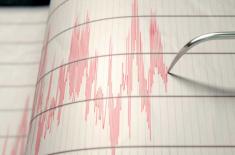
New Electricity Loadshedding Schedule Announced For DI Khan
Sumaira FH Published June 01, 2025 | 04:40 PM

DERA ISMAIL KHAN, (UrduPoint / Pakistan Point News - 1st Jun, 2025) The Peshawar Electric Supply Company (PESCO) has released a new and extremely strict loadshedding schedule for Dera Ismail Khan, with power cuts extending up to 20 hours a day on multiple feeders.
According to the newly issued schedule, feeders such as Gomal, Muniz Abad, Kotla Habib, University and Dera Development Authority (DDA) will face daily outages of up to 20 hours. The situation in other parts of the city is also dire as Mandran feeder will remain without power for 19 hours, while areas like Sagoo, Indus, and Baran Abad will experience 18-hour power outages.
Other feeders including Damaan Oil Mills, Sheikh Yousaf-I and II, CRBC, Qayyum Nagar, Muslim Bazar, Cantt-I, Touseef Abad, Commissionary Bazar, Sadar, and Murriyal-II will suffer 16 hours of daily loadshedding. Meanwhile, Murriyal-I, Topanwala Bazar, Degree College, and City-I feeders are scheduled for 14-hour electricity cuts.
Furthermore, City-II, Cantt-II, and Town Hall areas will face 12 hours of daily power suspension.
The prolonged electricity loadshedding severely disrupting business, education, and domestic life.
This decision stands in direct contradiction to a recent order issued by the Peshawar High Court Dera Bench, which had instructed the PESCO authorities to reduce loadshedding and ensure the provision of basic utilities to the public.
The citizens have expressed strong concern, calling the move a blatant violation of the court’s directive. They questioned that "if even the judiciary's orders are being ignored, who will listen to the public."
The civil society members and elected representatives have called for immediate attention and intervention.
In response to public outcry, local WAPDA officials have distanced themselves from the decision. They claim the schedule was issued by senior PESCO authorities in Peshawar, and that loadshedding is based on electricity bill recovery ratio as the specific areas with lower payment compliance face longer outages.
Recent Stories

AstraZeneca plans to invest $50 billion in US by 2030

Sixth edition of IMMAF Youth World Championships kicks off in Al Ain

Magnitude 6.4 earthquake strikes Russia's Kamchatka region

Currency Rate In Pakistan - Dollar, Euro, Pound, Riyal Rates On 22 July 2025

Today Gold Rate in Pakistan 22 July 2025

SGCA 2025 announces global partnerships with CSO Network, Asia House, AAP to amp ..

UAE Pro League announces nominees for 2024-2025 season awards

56th Session of Arab Permanent Committee on Human Rights discusses Israeli viola ..

Widespread rainfall expected across Pakistan; PMD issues flood and landslide ale ..

Third Shusha Global Media Forum concludes, highlights media literacy, AI challen ..

UN Secretary-General appalled by accelerating breakdown of humanitarian conditio ..

PML-N's Hafiz Abdul Karim wins Senate seat from Punjab with 243 votes
More Stories From Pakistan
-
NA Speaker expresses sorrow over Bangladesh Air Force plane crash
10 hours ago -
DPM, President UNGA discuss situation in Middle East
10 hours ago -
Sherry Rehman Condemns Balochistan Honour Killing as "Barbaric and Shameful"
10 hours ago -
Key objective of establishing university is to produce modern knowledge-based research: Governor
11 hours ago -
MD Afridi College Peshawar Pays Special visit to NLPD
11 hours ago -
Senate condemns Balochistan honour killing as lawmakers call for justice
11 hours ago
-
Cloudburst triggers flood emergency on Babusar road; tourists evacuated
11 hours ago -

PML-N's Hafiz Abdul Karim wins Senate seat from Punjab with 243 votes
11 hours ago -

Senate revises rules to strengthen presiding mechanism, update regional terminology
11 hours ago -

Killing of couple condemned
11 hours ago -

Nation to celebrate Independence Day-2025 with unique style, enthusiasm: Ahsan Iqbal
11 hours ago -

NP Punjab President Ayub Malik condemns honour killings in Balochistan, urges strong Govt action
11 hours ago




